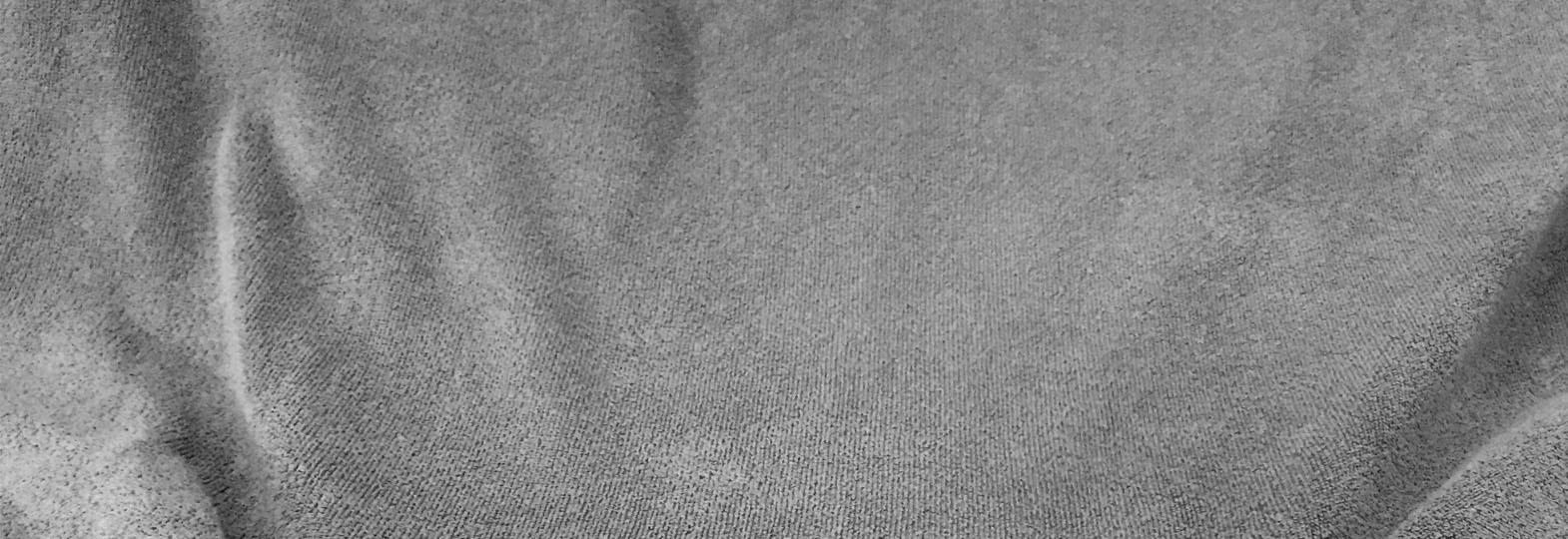The most attractive features of a garment are its appearance including colour, texture, shine and feel. Retailers look for developing smooth and comfortable garments that the customers will most likely purchase. But to achieve such effects, the mill made fabrics need to undergo several pre-treatment processes before they are dyed or printed.
Pre-treatment processes help eliminate added and natural impurities from the fabrics like natural colour of the fibres, sizing materials, oils, waxes, starch, spots, seed particles, soils and other impurities which affect the fabric’s absorbency, appearance, fullness of shade development, dye affinity and handle. During weaving of cotton yarns into fabrics, the yarns are given a sizing treatment to develop strength to bear the tension during weaving. The sizing paste consists of starch, oils and lubricating materials which hinders the absorbency of the fabric. The fabric develops several defects during weaving like spots and oil marks. These external matter present on the fabrics needs to be removed so that the fabric can be further dyed/printed or finished with best effects (Sisodia & Parmar, 2019).
Purpose of fabric pre-treatments
• To remove all impurities and immature fibres present in the fabric
• To improve uniform dye uptake capacity
• To improve moisture absorbency and hydrophilicity
• To achieve required degree of whiteness for exact shade development
• To improve fabric softness and handle, lustre, feel and texture.
The fabric pre-treatment process includes several dry-processing and wet processing stages like grey cloth inspection, shearing and cropping, singeing, desizing, scouring, bleaching, souring, washing, mercerising, and dyeing/printing.
a). Grey cloth inspection – The fabric obtained from the weaving department is called grey/greige cloth. It is inspected for visible defects, loose or floating threads, spots and oil marks, determining fibre type/blend type, etc. Then fabrics are stitched together with synthetic yarns (polyester cotton blend 80:20 ratio) on sewing machines to create continuous lengths of fabrics for further processes.
b). Shearing and cropping – This is done to remove any long protruding threads or loose threads lying on the surface of the fabric. During this process a metal detector is also fixed with the cropping or shearing machine so that it can detect any presence of metal particles in the fabric that can be removed manually.
c) Singeing – It is a mechanical process done to remove short, protruding fibres from the yarn interstices in the fabrics. These are very short and thin fibres that cannot be removed during the shearing process. These protruding fibres affect the dyeing/printing effect, smoothness and lustre of the fabric. They give a hazy appearance to the fabric known as frosting. Singeing improves the aesthetic values like smoothness, evenness, clean appearance and shine of the fabric. Clear and sharp printing effects could be achieved with singeing. The fabric passes through a singeing machine. The first region of the machine has brush rollers that brush out the short fibres protruding from the yarn interstices. Then the fabric enters a burning zone at high speed (50-300m/min) with two rows of flames, one facing the top surface and the other facing the bottom surface of the fabric. These flames burn out the protruding fibres. Finally, the fabric passes through a quench bath that extinguishes the sparks and cools the fabric. There are four types of singeing techniques namely Plate singeing, Roller singeing, Gas singeing and Enzyme singeing techniques.
d) Scouring – This process is also known as ‘kiering’, ‘kier boiling’, ‘boiling-out’ or ‘boiling’. The main purpose of scouring is to remove natural as well as added impurities like oils, fats, waxes, etc present in the cotton yarn/fabric and improve fabric absorbency. It makes the fabric highly absorbent without damaging it. Chemicals used are caustic soda (NaOH) sodium silicate (Na2SiO3) Soda ash (Na2CO3). After the process of scouring, the fabric is thoroughly washed to remove any traces of alkali in it.
Action of alkali during scouring
• Caustic soda helps in saponification of oils (oils are converted to soaps).
• Hydrolysis of fats and waxes.
• Break down pectins and proteins to soluble pectates.
• Swelling of cellulose to facilitate easier and quicker penetration of liquor.
• Mineral matters are dissolved.
• Other oils matter that cannot be converted to soap are emulsified.
• Dirt particles are removed and held in suspension.
e) Desizing – Desizing helps in the removal of size material or starch from the yarn/fabric by the process of hydrolysis of starch. The size material consists of starch, binder, softener, lubricants etc. Starch is an insoluble matter. During hydrolysis, starch (insoluble) gets converted to dextrin (insoluble) which further changes into soluble dextrin. It is further broken down to maltose (soluble) and then finally converted to the soluble alpha-glucose molecules. This can be removed by washing thoroughly with clean water. Desizing can be carried out in hydrolytic method by using water (rot steeping), acid (diluted HCl), enzyme (bacterial amylases) or oxidative methods using alkalis and chemicals followed by washing and rinsing.
f) Bleaching – Bleaching is done to remove the natural colouring matter present in the cloth or yarn in order to obtain high degree of whiteness and uniform appearance of the fabric. Bleached fabrics can be dyed to obtain bright shades, improved brilliance, and exact shades of the dyes. This process is also known as ‘chemicking’. Bleaching can be carried out using different bleaching agents followed by hot water washing, rinsing and neutralisation as explained below:
• Calcium Hypochlorite [Ca(OCl)2] bleaching (use of bleaching powder)
The scoured fabric is treated in a hypochlorite solution at room temperature. Nascent chlorine is liberated. This decomposes the matter into HCl and nascent oxygen [O]. This nascent oxygen is responsible for the bleaching action.
• Sodium Hypochlorite (NaOCl) bleaching
This is expensive than calcium hypochlorite bleach. It can give more thorough bleaching action as the sodium ions are smaller in size than calcium ions. Therefore, it has higher ability for diffusion and shorter time of bleaching.
• Hydrogen Peroxide (H2O2) bleaching
Hydrogen Peroxide is known as the universal bleaching agent and extensively used. It can be used for cotton, silk, wool and jute. The peroxide bleach requires less water, produces better absorbent goods, better whiteness and is a safer process. Continuous scouring and bleaching is possible in one operation. Souring process is not required after bleaching.
• Sodium Chlorite (NaClO2) bleaching
It is a safe bleaching process and does not damage the fabric. Good white effects can be obtained in the fabric.
g) Souring – This process is done after bleaching. Souring is done to neutralise the alkali present in the fabric during the process of bleaching. Therefore, dilute mineral acids like dilute hydrochloric acid or dilute sulphuric acid (1-20 Tw) or acetic acid (CH3COOH) is used at room temperatures. The fabric is then thoroughly washed with water to remove any residues and then dried. Any such residue will affect the fabric strength, texture, feel and quality in the long run. Hence, it must be thoroughly washed before being used for any further processes.
h) Mercerising – Mercerisation is a chemical treatment of cotton material with concentrated caustic soda (NaOH) under tension to impart a permanent lustre and smoothness in the fabric. The process consists of treating cotton yarn or cloth in concentrated caustic soda (50-550 Tw) for a few minutes under tension. A considerable shrinkage upto 25 per cent of the length of the material is achieved. The strength of the material is increased by 40 per cent. The process is followed by washing, then souring, washing and drying. (Harane & Adivarekar, 2016).
Action of mercerisation
When cotton material is dipped in a caustic soda solution, the fibre swells up and becomes rounder in shape. This happens due to the removal of convolutions from the fibre. The alkali is absorbed not only into the amorphous regions of the cellulose but also penetrates into the crystalline region. So, a lateral swelling of fibre occurs, and the convoluted shape of the fibre becomes circular. As a result of which the fibres become absorbent and dye uptake capacity of the material increases. This also results in shrinkage of yarn because as the fibre swells laterally within the spiral yarn structure, the whole yarn expands in diameter and the fibres form greater angles and traverse greater distances around the spiral, thus decreasing the length of the yarn causing shrinkage.
Benefits of mercerisation on a cotton fabric:
• It imparts lustre to the fabric
• Increases the dye uptake capacity and helps in uniform dyeing effect
• Increases the tensile strength
• Reduces the value of coefficient of friction thus fabric surface roughness is lowered
• Gives a translucent finish to cotton goods like lawns, voiles etc
• It also results in shrinkage of the fabric due to swelling of the yarn
• Reduces the bending length, rigidity/stiffness
• Improves fabric softness and handle
• Improves crease recovery properties.
Therefore, proper chemical and mechanical pre-treatments of the cotton material help to optimise the dye and print quality. The dyeing or print quality on pre-treated cotton fabrics is not affected by the fabric structure and hydrophilicity of the fabric surfaces because the pre-treatments give the cotton fabrics a balanced hydrophilic/hydrophobic character. Pre-treatments also help in developing higher colour absorption capacity, good colour retention property and line width control of the fabric.









Comments